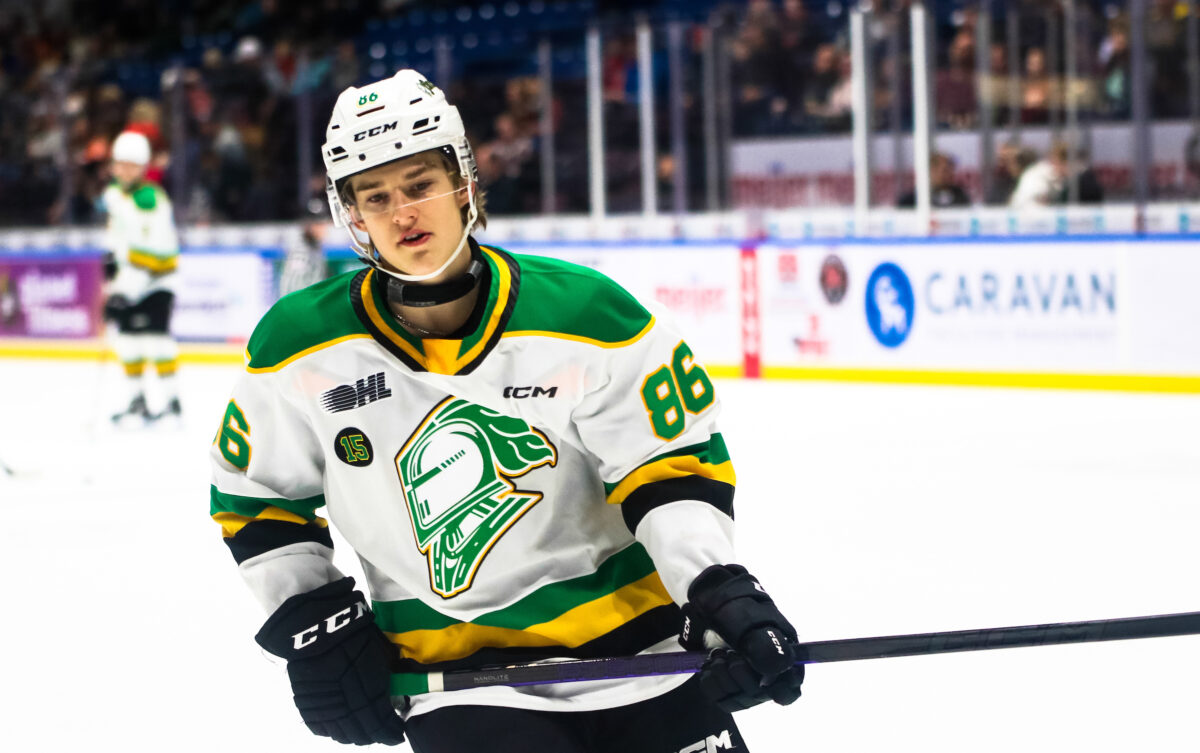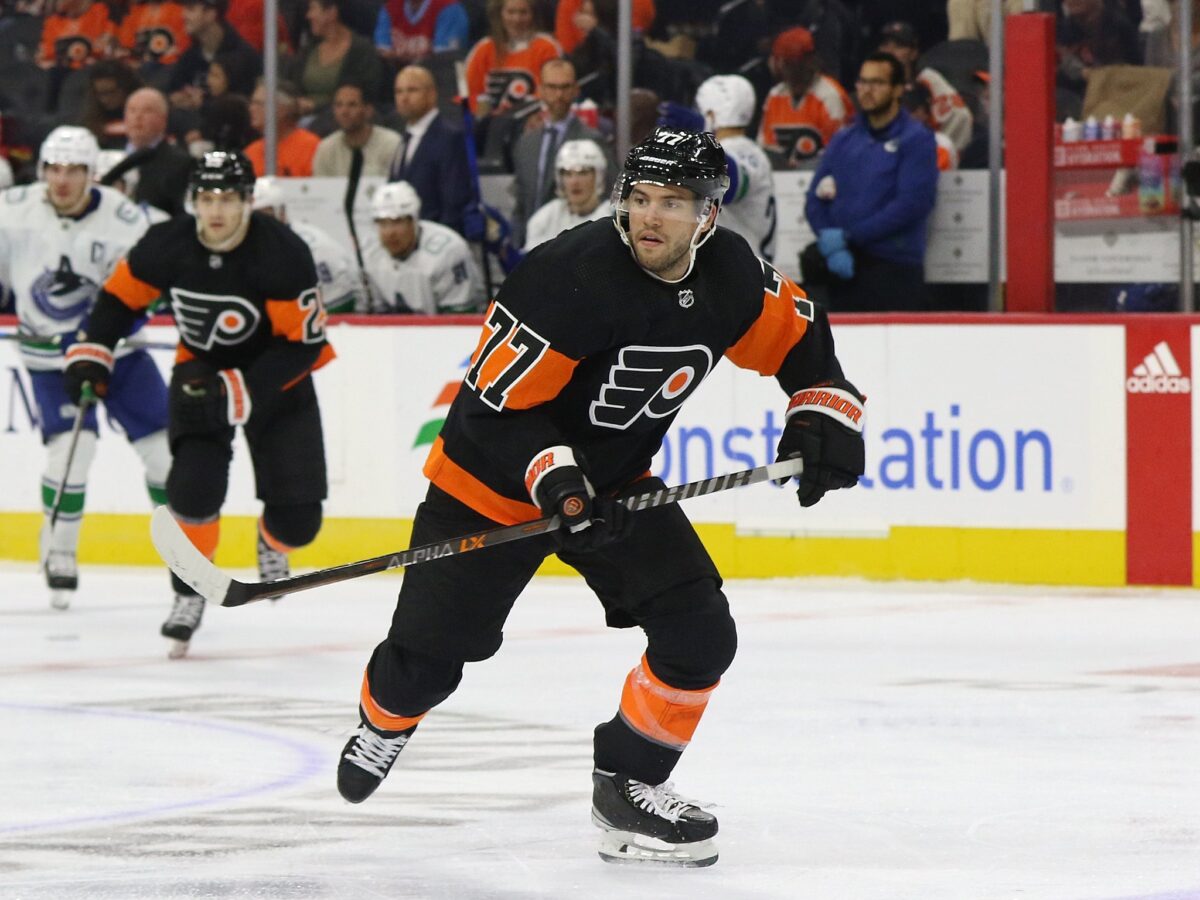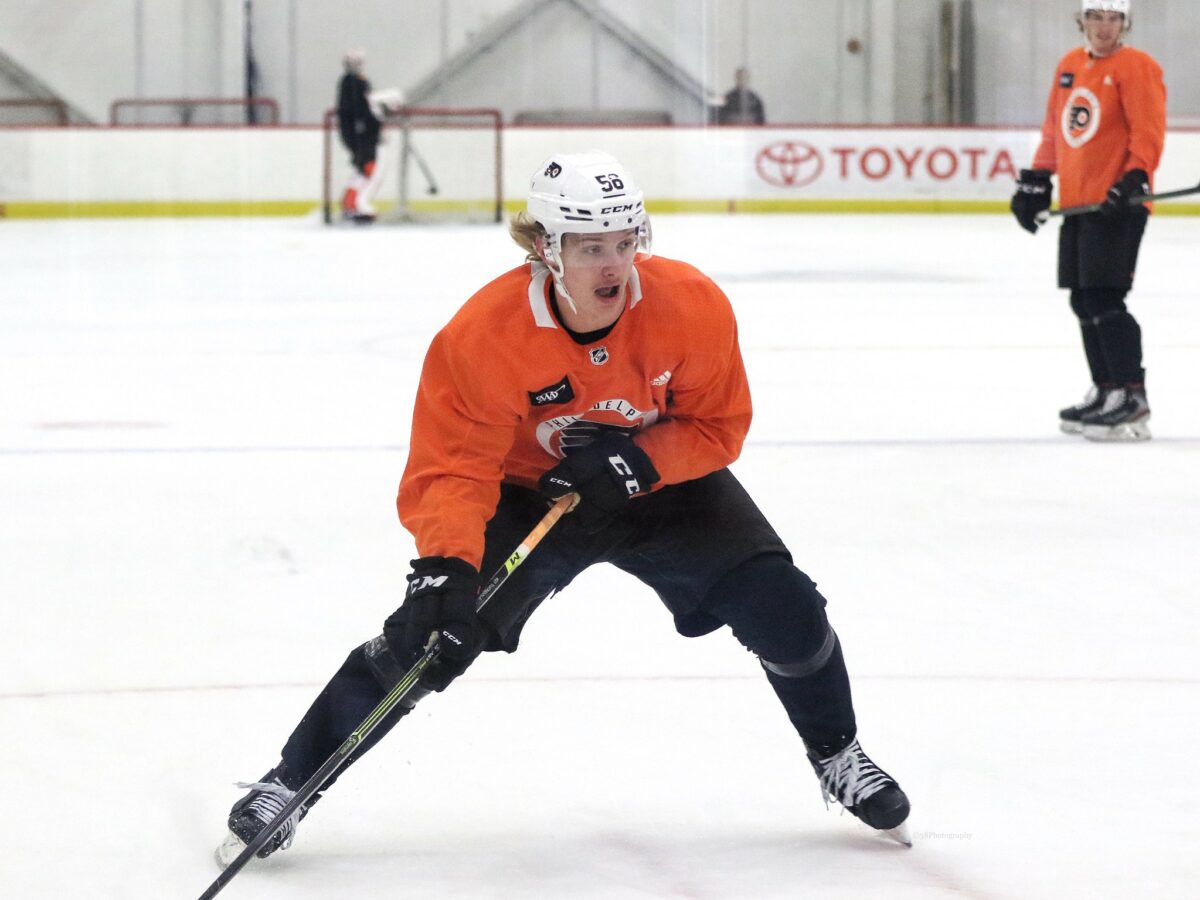Even though they’re having a surprisingly strong season, the Philadelphia Flyers are still very much focused on the future. Rebuilding the prospect pool has been the primary goal of the Danny Brière-Keith Jones regime. Naturally, that premise is centered on the team’s top picks.
The team’s 2023 first-rounders, Matvei Michkov and Oliver Bonk, are lighting up their leagues, which is good news, and plenty of attention will fall on the shoulders of the players selected with their two first-round picks this summer (the Flyers also have the Florida Panthers’ first from the Claude Giroux trade). Yet, what often separates a successful rebuild from a failed one is what happens after the blue-chip prospects are drafted. Only the best management groups unearth enough diamonds in the rough to build a roster that can both compete for the Stanley Cup and fit under the salary cap.
Between 2008 and 2010, the Tampa Bay Lightning drafted No. 1, No. 2 and No. 6 overall and came away with a two-time Rocket Richard winner in Steven Stamkos, a Norris winner in Victor Hedman, and a depth journeyman in Brett Connolly. Still, two out of three’s not bad. The Edmonton Oilers had similar luck with the first overall pick for three straight years from 2010-2012. They came away with two hits — Hart Trophy winner Taylor Hall and 100-point scorer Ryan Nugent-Hopkins — and one miss in Nail Yakupov, who hasn’t played in the NHL since 2018.
How did the Lightning become a consistent playoff team by 2014, while it took the Oilers until 2020? The Lightning followed up those high draft picks by selecting Nikita Kucherov, Tyler Johnson, Brayden Point, Alex Killorn, Yanni Gourde and Ondrej Palat in the second round or later. Edmonton’s lone home run drafted after the first round between 2010 and 2016 was John Marino, who they didn’t sign. Things became a lot easier for them once they started uncovering gems like Stuart Skinner and Ryan McLeod, although their list of recent great draft picks still pales in comparison to Tampa Bay. One of these teams has been to four Stanley Cup Finals in the last decade. The other hasn’t reached one since 2006. It isn’t hard to figure out which is which.
To their credit, the Flyers’ front office is aware of that. “We need a Brayden Point in the third round,” Keith Jones told The Athletic less than a week into his tenure as president of hockey operations (from ‘Flyers’ Keith Jones draws inspiration from another Philly team: ‘The Eagles are the model’’, The Athletic, May 16, 2023). Of course, drafting one is easier said than done, but the Flyers have some intriguing prospects showing potential. It’s too early to anoint any of them as future stars or even just useful NHLers, but here are a few prospects drafted outside the first round who are trending in the right direction.
Denver Barkey
One player who compares to Point stylistically and given his size is Denver Barkey. Point checks in at 5-foot-10, 178 pounds; Barkey is even smaller at 5-foot-9, 154 pounds, although he has room to grow at just 18 years old. Like Point, Barkey was a third-round pick out of the Canadian Hockey League. Most players his size who get drafted have plenty of high-end skills, and by all accounts, Barkey does.
It’s one thing to have tools and another to know how to utilize them. Barkey struggled to make the transition to the Ontario Hockey League (OHL) in his first season there in 2021-22, scoring 15 points in 53 games. But he took a big leap last season, with 59 points in 61 games and 24 points in 20 playoff games.
This season, Barkey has continued his ascension. He is fifth in OHL scoring with 64 points, putting him on pace for 104. Four OHL forwards were selected in the first round of the 2023 draft, and Barkey has more points than all of them. He was also one of the final cuts for Team Canada at the World Juniors. Finally, Fylers fans have had a chance to watch him and Bonk team up, particularly on a London Knights power play that’s leading the OHL with a 34.1 percent success rate.

Barkey would hardly be the first undersized forward to put up monster numbers as a teenager only to fizzle out in the pros. He’ll need to put on quite a bit of weight before he’s physically ready to play in the NHL, so don’t expect a serious push in training camp next year (even 2025 is probably optimistic). But, right now, he’s doing everything he can to make a name for himself.
Massimo Rizzo
Being fifth in league scoring, like Barkey, is great. You know what’s better? Being first.
If you told a Flyers fan that one of their prospects leads the NCAA in scoring, they’d probably think you weren’t aware of the Cutter Gauthier trade. Instead, it’s a player from a different deal from year one of the Brière era. Technically, the Flyers didn’t trade Tony DeAngelo; they bought him out. However, we know the Flyers wanted to trade DeAngleo back to the Carolina Hurricanes last summer, but the NHL wouldn’t let it go through since it had been less than a year since the Flyers acquired DeAngelo from the Hurricanes.

We also know the teams made a deal shortly after the buyout where the only asset the Flyers gave up was David Kaše, a 26-year-old playing in Czechia who is unlikely to return to North America. What did the Flyers acquire for Kaše/DeAngelo? A 2025 fifth-round pick… and another undersized scoring forward in the 5-foot-10, 172-pound Massimo Rizzo.
Since he arrived at the University of Denver in 2021-22, Rizzo has lit up the college ranks. He won a national championship alongside Bobby Brink while putting up 36 points in 39 contests. He was even better as a sophomore, again finishing just outside of the top 10 with 46 points in 38 games. This season, however, he has 41 points in 24 games. Only his Denver teammate, a fellow smaller forward and seventh-round pick, is within seven points of his total. For a Flyers system that has quietly loaded up on snipers, Rizzo is an excellent playmaker who also leads the country in assists with 31.
There are some red flags with Rizzo, which might not be surprising given how little the Hurricanes seemed to value him after two strong collegiate seasons. He is on the older side, playing two seasons in the British Columbia Hockey League, then sitting out the 2020-21 season before enrolling at Denver. He’s also an older birthday for his draft year — he turns 23 this summer. There’s also concern that Rizzo doesn’t play with enough pace to make it in the NHL. Have I mentioned how small he is?
Still, we’re talking about the leading scorer in college hockey. There’s a chance he could be something. It’s hard to argue that the Flyers could have received a better return for a player they actively wanted to dump. Rizzo could be one they don’t want to lose any time soon.
Samu Tuomaala
What a difference a year makes. Samu Tuomaala is the highest draft pick on this list, selected 46th overall in 2021 (in fact, he was Philadelphia’s highest pick that year). During his draft-plus-one and draft-plus-two seasons, Tuomaala played in four different leagues. Though he still made Finland’s World Junior team in those seasons, the yo-yo-ing did Tuomaala’s development no favors.
However, his first full season in North America has gone about as well as possible. His 31 points rank third in the American Hockey League among rookies and just outside of the top 20 overall. Tuomaala has leaned into his speed to be effective, developing as a forechecker and becoming a more well-rounded player. Even though he was named an AHL All-Star, there is still room for him to grow. Tuomaala is regarded as having a plus shot, and while 12 goals are nothing to sneeze at, his 69 shots are the second-fewest of the 52 AHLers with at least a dozen goals.

Tuomaala’s development is on a similar trajectory to Scott Laughton. Drafted No. 20 in 2012, Laughton was all over the place in the first few years of his career. He earned a nine-game NHL trial right out of the box but was sent back to the OHL for two seasons. He split the 2014-15 season between the Flyers and Phantoms and spent 2015-16 exclusively in the NHL, but seemed to be stagnating. So, the Flyers sent Laughton to the AHL for the final year of his entry-level contract to rework his game.
Laughton has turned into a quality bottom-six forward — a sub-optimal outcome for a first-round pick but far better than the trajectory he was on. Tuomaala is a second-round pick, so expectations aren’t quite as high. His chances of being a true impact player are slim, but he could be ready to make a positive NHL impact as soon as this season. Having a player with his skillset on the third line for years to come is a good thing. Tuomaala may not have Point or Kucherov upside, either. But being to the Flyers what Killorn or Gourde were to the Lightning during their Cup wins would still be a great outcome.
Hunter McDonald
Approaching Hunter McDonald’s case like Barkey and Rizzo’s, you’d quickly dismiss McDonald. Like Rizzo, he’s a bit on the older side, turning 21 this season, his sophomore campaign at Northeastern. He also has two assists in eight games after a modest 14 points in 35 games last season. A future power-play quarterback, he is not.
Stats aren’t everything, especially for defensemen, and McDonald seems to have caught the attention of the Flyers’ front office. In a recent interview with PHLY Sports, Jones brought up McDonald’s name unprompted when asked about the team’s defensive core of the future.
“[He] is going to be a beast when gets here,” Jones said. “I’m so excited about him, as well. Just the physical element that he has, the size, the strength, the skating ability.”
McDonald is an outlier on this list in terms of size, at 6-foot-3, 207 pounds. Considering the Flyers’ young defensemen, he also fills a potentially unrealized niche. They have their puck-moving, offensive defensemen of the future who are on the smaller side in Cam York, Jamie Drysdale and Emil Andrae. Travis Sanheim, Egor Zamula and Ronnie Attard are bigger, but none are true defensive defensemen. McDonald doesn’t have the highest ceiling, but again, not everyone in that aforementioned group of Lightning late-round steals turned out to be a star.
Importance of Flyers Prospects Succeeding
Not counting Ryan Ellis’ $6.25 million cap hit that could be placed on long-term injured reserve, the Flyers have about $62.6 million committed for next season. However, that figure doesn’t account for restricted free agents Owen Tippett, Carter Hart and Zamula, all in line for raises. Sean Walker and Nick Seeler will be unrestricted free agents this offseason, as will Travis Konecny in 2025.
Related: Flyers’ Demotion of Bobby Brink to the AHL Is a Mistake
It’s imperative that management either develops prospects to fit within the bigger cap hit these players will command if re-signed or fill the void they’ll leave if they depart. Considering that the organization’s top prospect (Michkov) is under contract in the Kontinental Hockey League for two more seasons, the impetus to find diamonds in the rough grows further. Granted, except Tuomaala, all of these players are likely at least two years away from reaching the NHL, but the Flyers’ quest to build a contender is dependent on players like these four turning into quality contributors.